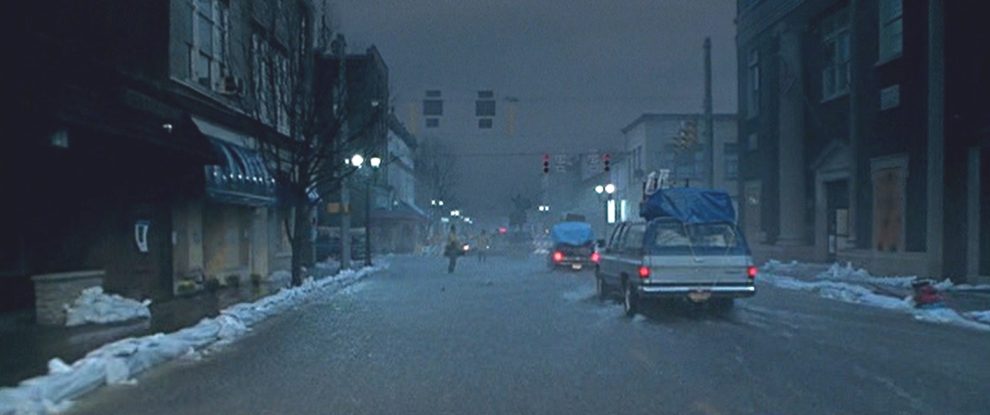It’s absolutely pouring in Los Angeles Monday night as another storm hits the area, with rivers running down my street, my yard turned into a large swimming pool, and evacuations being ordered in Prince Harry’s town of Montecito (just south of Santa Barbara).
I wrote last week about how instead of welcoming this desperately needed precipitation, the media has largely been portraying it in a negative light, bemoaning the terrifying-sounding “bomb cyclone” and predicting horrible things. Yes, the historic onslaught will cause some damage, but you don’t get Nature on your terms—you get it on Nature’s.
LOCAL : Thunderstorms continue throughout Santa Barbara/Venutra and Los Angeles counties. Lightning strikes reported East of Ojai and West of Santa Clarita. Santa Barbara Airport closed until further notice.#SantaBarbara #venturacounty #LosAngeles @NWSLosAngeles pic.twitter.com/f5I4Wv5cN8
— CaliforniaNewsWatch (@CANews_Watch) January 10, 2023
The question is, with billions of gallons dropping out of the sky, where does all that water go? Shouldn’t this be enough to end the drought and leave us with oodles of H2O?
Turns out, the answer lies in bad planning, wasted resources and bureaucratic entanglements. Why do I say that? Because most of this water will fly down the LA River and into the ocean, an ephemeral visitor that we fail to capture or effectively utilize. In effect, God is giving us the very answer to one of California’s most vexing problems—and we’re simply letting it slip through our hands.
It never rains in Southern California… Except when it does.
And it all goes straight into the Pacific Ocean pic.twitter.com/9wKXCgiK0L
— Bob Hoge (@Bob_Hoge_CA) January 10, 2023
The Los Angeles Times explains:
It was by all accounts a washout, but despite heaps of water pouring into the area, drought-weary Los Angeles won’t be able to save even half of it. The region’s system of engineered waterways is designed to whisk L.A.’s stormwater out to sea — a strategy intended to reduce flooding that nonetheless sacrifices countless precious gallons.
Voters in 2018 approved Measure W, which is aimed at improving L.A.’s aging stormwater capture system. Officials are making progress, but experts say there’s a long way to go. Of an estimated 5 billion to 10 billion gallons pouring into the Los Angeles Basin from current storms, only about 20% will be captured by the county.
I lived in LA several years before I understood why the city paved over the river and turned it into an unsightly mass of concrete carving through neighborhoods, usually with only a slight trickle running through it. But then I experienced my first big rain, and watched as the river turned from a dribble to a raging maelstrom. Only the tall walls of the river held it back, preventing it from sending massive floods into the surrounding areas.
The one thing they forgot to plan for, however, was how to capture it:
Part of the challenge is that the current system was built about 100 years ago, in an era when Angelenos were more concerned about saving lives and property from flooding than they were about drought. Their solution was to lay millions of barrels of concrete to get rid of that water faster — channelizing the L.A. River, Ballona Creek and nearly every other waterway in the area.
The L.A. River was wild Thursday after another storm hit Southern California, bringing rain, flash flood concerns, strong winds and dangerous surf in the region.
See our complete storm coverage at https://t.co/wMtFyrJaqo pic.twitter.com/vHfN35OUvS
— Los Angeles Times (@latimes) January 5, 2023
Despite being one of the highest-taxed states in the nation, California continues to watch one of it most valuable resources simply slip away into the Pacific Ocean. Meanwhile, Governor Gavin Newsom and the Sacramento legislature enacted strict water use measures this summer, leading to most of our lawns dying, and enforced tough standards on home devices—meaning our showers barely get you wet and our toilets hardly flush. It’s part of the culture of “lack” that has taken over in our society; despite having vast resources we are always focused on what we don’t have.
What we do have, however, is water, and tonight I will watch it pour down all across Southern California. Tomorrow I will watch it make its way to the ocean.
Story cited here.
























